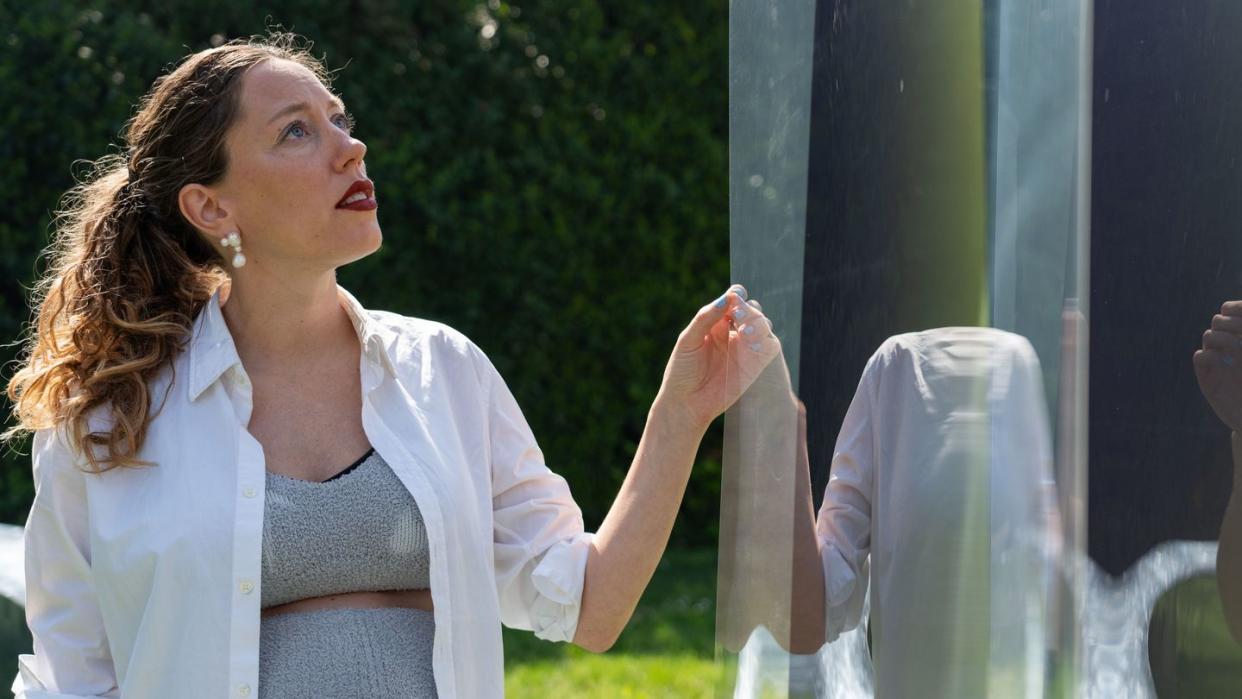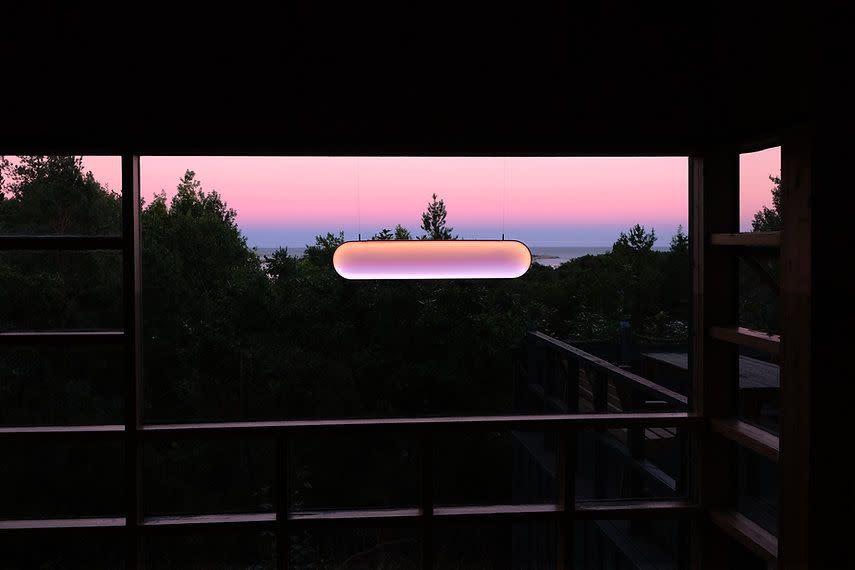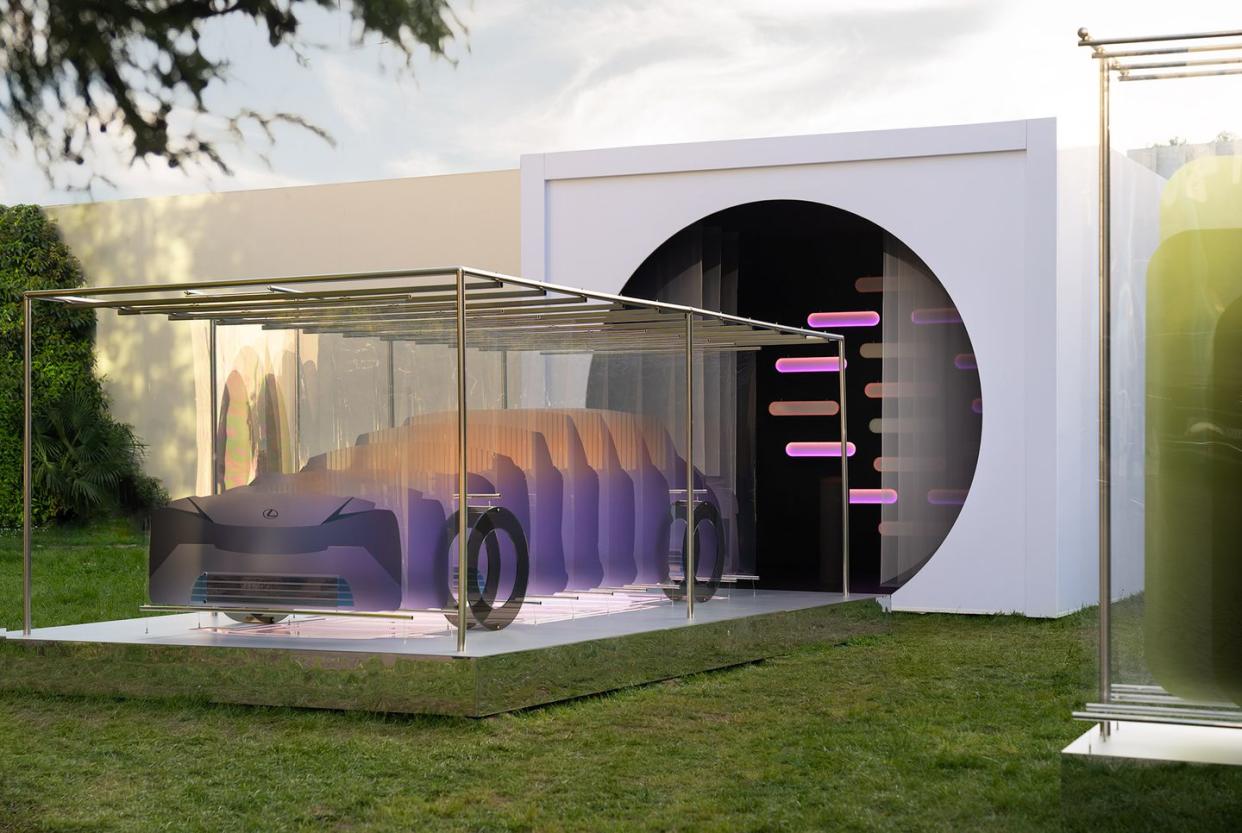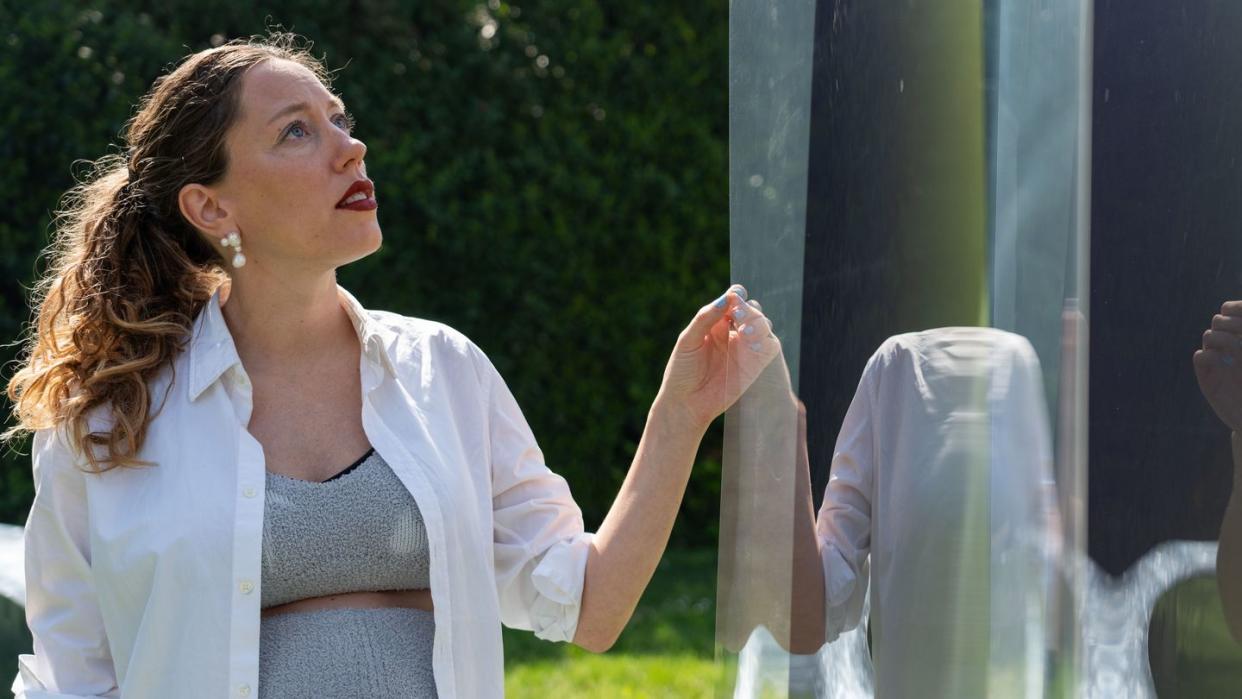Can Solar Panels Be hot? This Artist Thinks So

Every year during Milan Design Week, visitors are served an onslaught of brand activation—some engaging, some not—aimed at sparking a discussion surrounding design and where it’s headed. This year, Lexus has partnered with two designers, Hideki Yoshimoto and Marjan van Aubel, on installations that push us to think about the role of design on a rapidly deteriorating planet. Van Aubel’s practice uses a seemingly intangible material, solar energy, as the basis for all of her sleek yet inviting installations. For the Dubai World Expo in 2020, she clad the roof of the Dutch pavilion in colorful solar panels. In 2022, she helped launch the Solar Bienniale in her home country to celebrate the potential of photovoltaics and imagine a world fueled entirely by the sun. In Milan, in an interactive installation called 8 Minutes and 20 Seconds, which was first shown during Miami Art Week last year, van Aubel has surrounded Lexus’s LF-ZC electric sedan in an ethereal, holographic enclosure that features 11 solar panels. Beyond, solar-powered lamps light up in the colors of the sunset.
The designer sat down with us to share her thoughts on how solar power can be utilized efficiently, without sacrificing the very real benefits of beauty.
ELLE DECOR: How can solar energy be used as a material?
Marjan van Aubel: You can mold it in different ways, color it, and bend it. I work with fully transparent solar cells, using thin sheets of material that photosynthesize light, trap it, and convert it into energy.

ED: So you are part designer, part scientist?
MvA: I’m 100 percent a designer, but I appreciate that things need to be functional. I work with colors and feelings. The world of solar energy is so male dominated and technical and based on numbers. I think we need a more human approach to solar energy, where we also look at aesthetics.
ED: What are your most pressing concerns as a designer?
MvA: My biggest concern is how can we change things when we are up against such a big system we don’t have control over. How do we really adapt to clean energy when there are still big lobbies and investments going to fossil fuels? We need the public and new, different voices to change this.
ED: This year Lexus chose the theme of time. How did you incorporate that into your work?
MvA: The title of my work is 8 minutes and 20 Seconds. That is the time it takes for a light particle to travel from the sun to the Earth. My installation allows you to experience the car via a hologram. You can walk through it and it reacts to you. It’s a solar-powered installation, but you wouldn’t know without someone telling you, which I like. It’s integrated.

The sun is also represented in the space with 16 of my Sunne lights. Sunne is Old English for sun. One side of the lamp is a solar panel that hangs in front of a window and the other side is a light. During the day it harvests energy from the sun. When the sun goes down the light goes on automatically. It mimics the sunrise and sunset. [In the exhibition] they provide you with a personal sunrise of your own.

ED: What do you hope visitors will come away from the installation feeling or considering?
MvA: I hope people start to consider solar design as a discipline of its own. I want my work to inspire hope and motivation. I want people to think about what else they can do with solar energy.
ED: What do you think the design and architecture worlds desperately need at this moment?
MvA: In design we don’t think about what happens after we make something. We need to think more about the impact an object has when it leaves the designers studio. It’s called “cathedral thinking”—you make something and think about what the effect will be in 50 or 100 years.
We have seen plastic islands and the bad sides of our mass production—design plays a role in that because its goal is for you to keep buying new things. I like that [designers] fixate on new materials and experiments, but we would also benefit from a more poetic, natural technology that is more integrated, female, tangible, human, and emotional. That’s what we need right now; otherwise we won’t change much.
You Might Also Like
